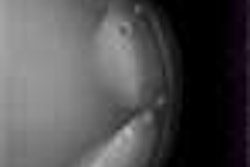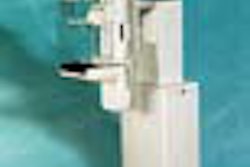VIENNA - Computer-aided detection (CAD) systems are getting more attention as mammographers seek fast, reliable methods of characterizing masses and microcalcifications as malignant or benign with fewer biopsies.
At the technical breast sessions of the European Congress of Radiology, Dr. Christine Marx from the Institute of Diagnostic and Interventional Radiology at Friedrich-Schiller-University in Jena, Germany reported the results of a study that looked at one of two such systems currently on the market: SecondLook from CADx Medical Systems of Montreal, which is approved for sale in Europe, Latin America, Canada, and Asia.
"Our goal was to evaluate the specificity and sensitivity of the CAD system in the detection of highly suspicious microcalcifications to (determine) the usefulness of such a system concerning the assessment of microcalcifications," Marx said.
The system works by analyzing digitized film mammograms. SecondLook then analyzes the mammograms with an image-processing algorithm to mark potential areas of concern using an ellipse for masses ("massmarks" and a rectangle for microcalcifications ("calcmarks"), Marx said. The system then laser-prints a "Mammograph" consisting of the mammogram and the suspicious areas marked with rectangles and ellipses.
"Mass marker (targets) include non-spiculated masses, spiculated masses, architectural, and nonassymetric densities," Marx said. "The ellipse is adjusted to the size of the lesion."
"We used 108 mammograms with highly suspicious microcalcifications," she added. "The level of suspicion was category 4 or 5 (for all microcalcifications). All lesions were histologically proven, and there was no preselection of the size or the location of the suspicious microcalcifications."
Malignant lesions marked by the system were deemed true positives, and benign lesions marked as malignant were deemed false positives. At biopsy or surgery, 50 of the microcalcifications were malignant, and 58 were benign.
According to the results, CADx correctly detected 43/50 malignant microcalcifications, for a sensitivity of 86%. The remaining 58 cases had biopsy-proven benign microcalcifications. These were correctly not marked in only 25/58 cases, resulting in specificity of 43%. Thus, the positive predictive value was 57% (43/76) and the negative predictive value was 78% (25/32). Accuracy was 1.21, Marx said.
"The sensitivity of the system for the detection of microcalcifications is rather high; specificity is lower," Marx said. "We feel high sensitivity is the most important thing in using CAD. We should take into consideration that CAD systems were not developed to make diagnostic decisions. They should be used to help detect missing cancers. It should be noted that false-positive ratios might be overestimated by our entrance criteria, i.e., suspicion level 4 or 5. We think CAD systems show a usefulness in routine mammography."
CADx Medical Systems introduced Second Look in January 2000, and submitted the second portion of its pending premarket approval application to the U.S. Food and Drug Administration last November. The ImageChecker system from Los Altos, CA-based R2 Technology is the only CAD system currently approved for marketing in the U.S.
By Eric Barnes
AuntMinnie.com staff writer
March 5, 2001
Click here to post your comments about this story. Please include the headline of the article in your message.
Copyright © 2001 AuntMinnie.com



















